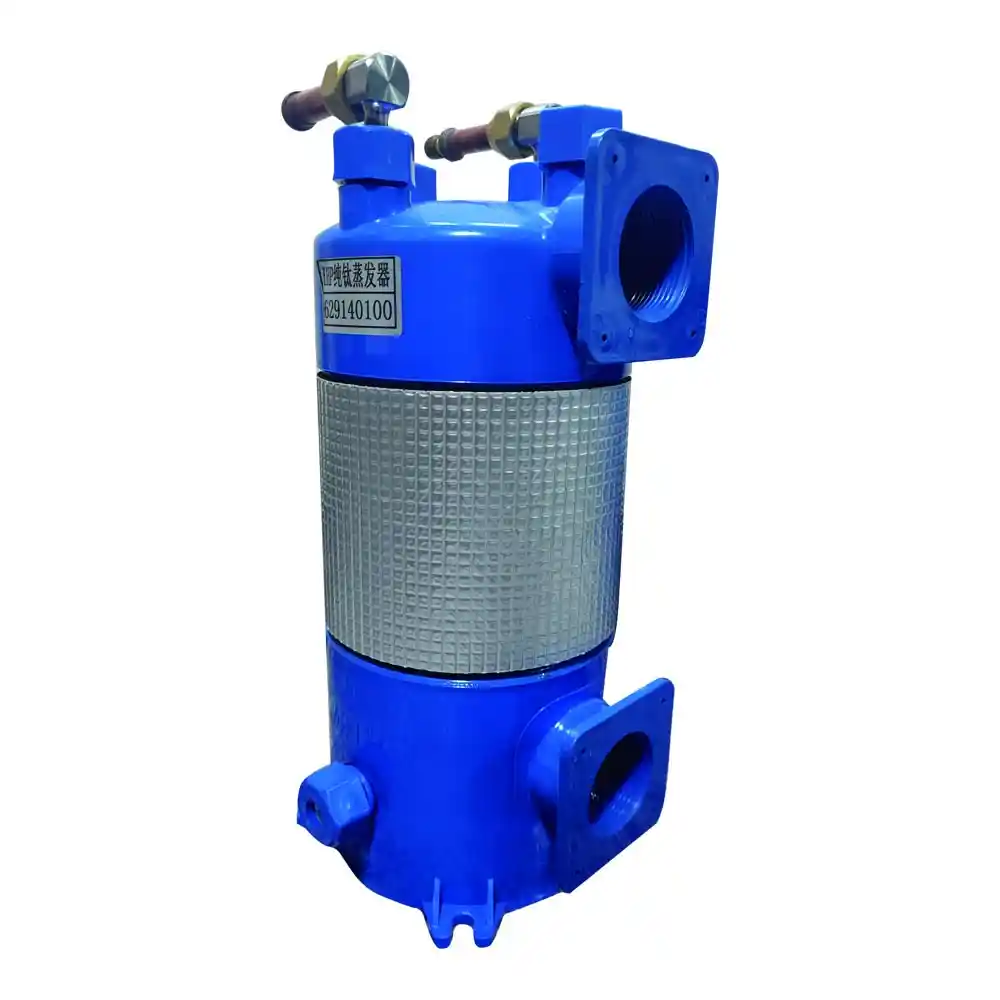1. Introduction
The power generation industry plays a vital role in meeting the world’s energy demands. Efficient heat transfer systems are essential for optimizing power generation processes and ensuring reliable and sustainable energy production. Titanium Coil Heat Exchangers have emerged as a key technology in power generation applications, offering exceptional performance and durability. In this article, we will explore the application of Titanium Coil Heat Exchangers in power generation, their benefits, performance comparisons, and specific case studies.
2. Understanding Titanium Coil Heat Exchangers
Titanium Coil Heat Exchangers utilize coiled titanium tubes to facilitate efficient heat transfer in power generation processes. The unique properties of titanium make it an ideal choice for demanding power generation applications. Let’s delve into the specific applications and advantages of Titanium Coil Heat Exchangers in the power generation industry:
2.1 Benefits of Titanium Coil Heat Exchangers in Power Generation
Titanium Coil Heat Exchangers offer several advantages that make them highly suitable for power generation applications:
2.1.1 Corrosion Resistance
Power generation processes involve working with aggressive fluids, high temperatures, and corrosive environments. Titanium’s exceptional corrosion resistance ensures the longevity and reliability of Titanium Coil Heat Exchangers, even in challenging operating conditions. They can withstand corrosive mediums such as cooling water, condensates, and steam, minimizing the risk of equipment failure and reducing maintenance requirements.
2.1.2 High Thermal Conductivity
Efficient heat transfer is crucial for power generation processes to maximize energy conversion. Titanium has excellent thermal conductivity, allowing for efficient heat exchange between different fluids. The coiled design of Titanium Coil Heat Exchangers further enhances heat transfer efficiency by providing a larger surface area for heat exchange, resulting in improved system performance.
2.1.3 High-Temperature and Pressure Resistance
Power generation plants often operate at high temperatures and pressures. Titanium Coil Heat Exchangers are specifically designed to withstand these demanding conditions. They offer excellent high-temperature and pressure resistance, ensuring reliable performance and minimizing the risk of equipment failure. Titanium Coil Heat Exchangers find applications in various power generation processes, including steam power plants, combined cycle plants, and geothermal power plants.
2.1.4 Energy Efficiency and Reduced Maintenance
The exceptional fouling resistance of Titanium Coil Heat Exchangers minimizes fouling-related issues, such as scaling and deposits, improving energy efficiency and reducing the need for frequent cleaning and maintenance. This leads to improved operational efficiency, reduced downtime, and significant cost savings in power generation facilities.
2.2 Performance Comparison: Titanium Coil Heat Exchangers vs. Other Heat Exchanger Types
To understand the advantages of Titanium Coil Heat Exchangers in power generation, let’s compare their performance with other commonly used heat exchanger types. The following table presents a comparison of Titanium Coil Heat Exchangers, Shell and Tube Heat Exchangers, and Plate Heat Exchangers:
| Comparison Criteria | Titanium Coil Heat Exchangers | Shell and Tube Heat Exchangers | Plate Heat Exchangers |
|---|---|---|---|
| Corrosion Resistance | Excellent | Good | Moderate |
| Heat Transfer Efficiency | High | High | Moderate |
| Pressure Handling Capacity | High | High | Low |
| Compact Design | Yes | No | Yes |
| Maintenance Requirements | Low | Moderate | Moderate |
| Fouling Resistance | Excellent | Good | Moderate |
Note: The table provides a general comparison based on typical performance characteristics. Actual performance may vary depending on specific design and operating conditions.
3. Case Studies: Application of Titanium Coil Heat Exchangers in Power Generation
Let’s examine two case studies that highlight the successful implementation of Titanium Coil Heat Exchangers in power generation processes:
3.1 Case Study 1: Steam Power Plant
In a steam power plant, Titanium Coil Heat Exchangers are utilized in the condenser system to transfer heat from the steam turbine exhaust to the cooling water. The corrosion resistance of titanium ensures reliable performance and longevity in the presence of hot steam and cooling water. The compact design of Titanium Coil Heat Exchangers allows for easy integration into the plant layout, optimizing space utilization and facilitating efficient heat transfer.
3.2 Case Study 2: Geothermal Power Plant
Geothermal power plants harness the heat from deep within the Earth to generate electricity. Titanium Coil Heat Exchangers play a vital role in these plants by transferring heat from the geothermal fluid to the working fluid, such as isobutane or isopentane. The excellent corrosion resistance of titanium is essential in handling the corrosive nature of geothermal fluids, ensuring long-term performance and minimizing maintenance requirements.
4. Conclusion
Titanium Coil Heat Exchangers have emerged as a game-changing technology in the power generation industry. Their unique combination of corrosion resistance, high thermal conductivity, and the ability to withstand high temperatures and pressures make them an ideal choice for various power generation applications. The benefits of Titanium Coil Heat Exchangers, including energy efficiency, reduced maintenance, and compact design, contribute to improved system performance and cost savings. The case studies presented demonstrate the successful application of Titanium Coil Heat Exchangers in steam power plants and geothermal power plants. By leveraging the advantages of Titanium Coil Heat Exchangers, power generation facilities can enhance operational efficiency, optimize space utilization, and ensure reliable and sustainable energy production.


